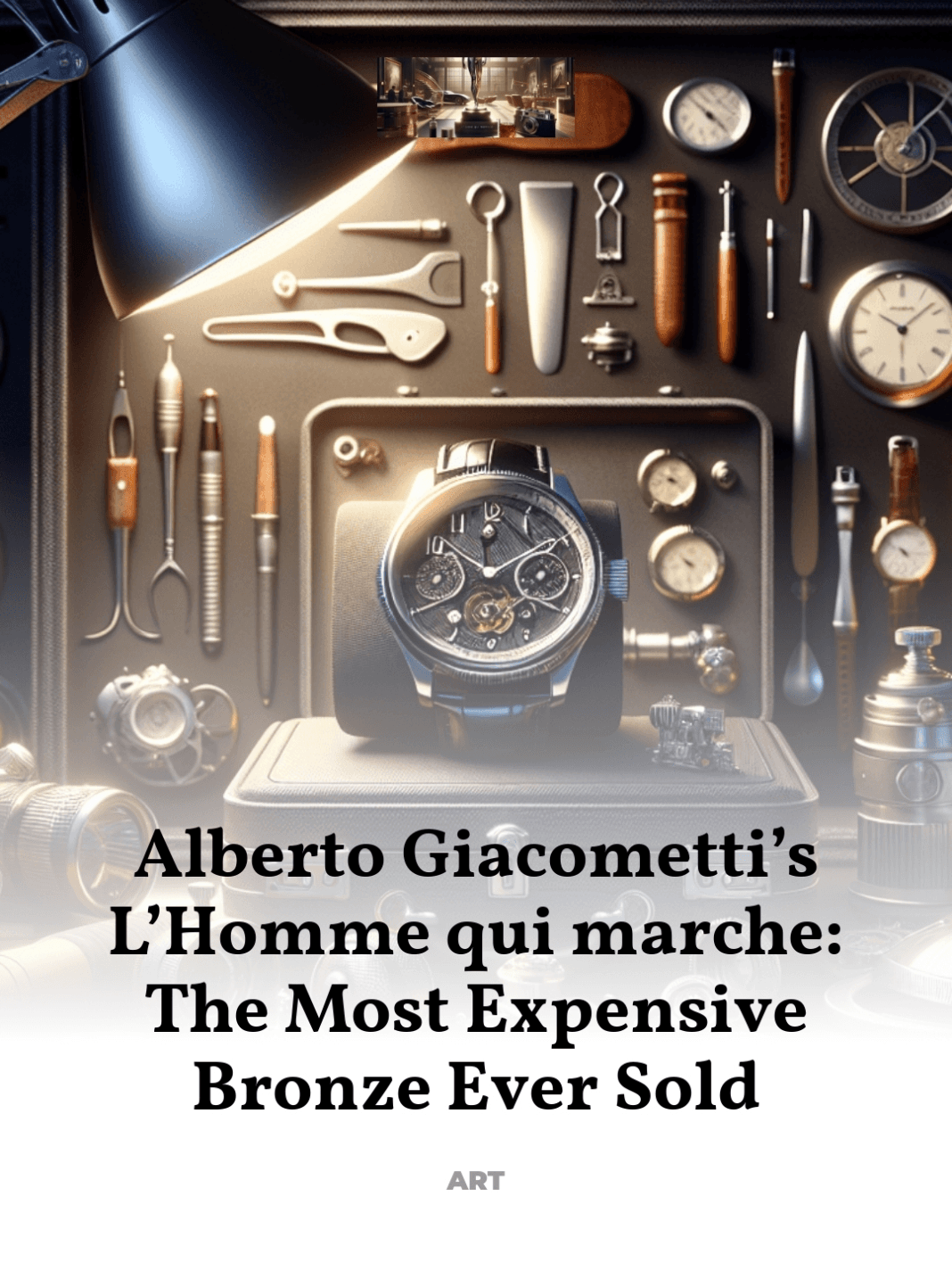How Giacometti’s Elongated Figures Revolutionized Sculpture
Alberto Giacometti’s sculpture, L’Homme qui marche, stands as a towering achievement in modern art, symbolizing the existential drama and the resilience of the human spirit. This iconic work not only fetched an unprecedented price at auction but also marked a pivotal moment in the history of sculpture with its unique aesthetic and philosophical depth.
- Giacometti’s Artistic Legacy
- Understanding L’Homme qui marche
- Revolution in Sculptural Form and Expression
- Cultural and Philosophical Impact
- The Allure of Collecting Giacometti
- Reflecting on Giacometti’s Influence
Giacometti’s Artistic Legacy
Alberto Giacometti (1901-1966), a Swiss sculptor and painter, emerged as one of the most esteemed artists of the twentieth century. His distinctive approach to sculptural form involved elongating figures until they became thin, almost ethereal beings that radiate a raw, intense energy. Born in Borgonovo, Switzerland, Giacometti was immersed in an artistic environment from an early age, influenced heavily by his father, Giovanni, who was a post-Impressionist painter.
Throughout his career, Giacometti strived to capture the essence of humanity through his sculptures. His works are often seen as expressions of the human condition, reflecting themes of solitude, fragility, and strength. His approach was not just a stylistic choice but a philosophical exploration of how one perceives the human figure in space and time.
Understanding L’Homme qui marche
L’Homme qui marche (The Walking Man) is an iconic sculpture that represents a lone man in mid-stride. The piece is celebrated for its compelling simplicity and stark realism. Created in 1960, during a period of intense experimentation for Giacometti, the sculpture distills his exploration of the human form to its most essential elements. The figure is both a solitary wanderer and a powerful symbol of humanity’s relentless pursuit of meaning and continuation.
The sculpture’s rough surface texture and elongated limbs suggest a sense of perpetual movement and existential struggle. This piece, standing at over six feet tall, commands the space around it, engaging viewers from every angle in a dialogue about the human experience. The anonymity and universality of the figure’s form allow it to transcend specific narratives, making it a timeless reflection on human resilience.
Revolution in Sculptural Form and Expression
Giacometti’s approach to sculpture was revolutionary. His figures, radically elongated and stripped of nonessential details, broke away from traditional representations of the human body. This stylistic evolution occurred during the post-World War II era, a time marked by existential despair and a quest for new artistic expressions that could encapsulate the fragility of the human condition.
His sculptures offer a stark contrast to both the idealized forms of classical art and the abstract movements that dominated the early 20th century. Giacometti’s figures are not meant to represent physical perfection or abstract concepts but rather to evoke an emotional response from the viewer through their textured surfaces and stretched proportions. This method of sculpting was not only a departure from previous norms but also a technical challenge, pushing the limits of bronze casting and the stability of the sculptures themselves.
Cultural and Philosophical Impact
The impact of Giacometti’s work extends beyond the boundaries of art into the realms of philosophy and cultural discourse. His sculptures, particularly L’Homme qui marche, resonate with themes explored by existentialist philosophers like Jean-Paul Sartre and Martin Heidegger, who were contemporaries of Giacometti. These philosophers delved into concepts of alienation, freedom, and the inherent meaning (or meaninglessness) of life—themes that are palpably present in Giacometti’s work.
Moreover, Giacometti’s influence permeated popular culture, impacting literature, film, and even fashion. His distinctive style has inspired countless artists and designers who seek to capture a similar sense of raw humanity and emotional depth in their work.
The Allure of Collecting Giacometti
Collecting works by Giacometti offers art aficionados not only the pleasure of owning rare pieces of art but also the opportunity to engage with profound philosophical and aesthetic questions. Each sculpture or painting by Giacometti is a fragment of a larger dialogue about human existence and artistic expression.
For collectors, Giacometti’s works are prized for their historical significance and their ability to communicate deep emotional and existential truths. They are seen as investments in cultural heritage, embodying a pivotal moment in the history of art where form and content were distilled into expressions of pure human essence.
Reflecting on Giacometti’s Influence
Alberto Giacometti’s legacy as an artist who reshaped the landscape of modern sculpture is undeniable. His innovative approach to form, meticulous craftsmanship, and profound engagement with existential themes have established him as a central figure in modern art. L’Homme qui marche stands as a testament to Giacometti’s genius, a beacon of the enduring human spirit amidst the ceaseless march of time.
For further exploration of Giacometti’s work and its cultural significance, esteemed institutions such as the Fondation Giacometti in Paris provide comprehensive insights and exhibitions dedicated to his life and art.



